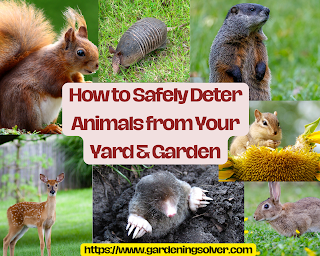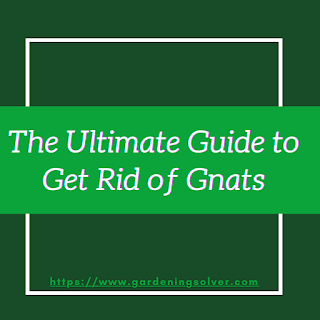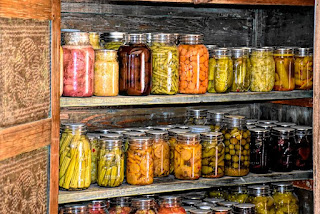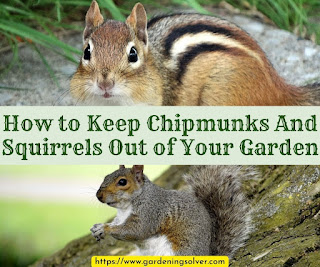How to keep animals out of your yard and garden
But for a dedicated gardener, giving up is not an option. By taking a multi-pronged approach, it is possible to restore plants and prevent further damage from animals. In this guide we'll explore a range of in-depth strategies to keep unwanted animals at bay.
Disclosure: This post contains affiliate links. We may receive commissions on purchases made from our chosen links with no extra cost to you. Learn more.
Identify the Animals that are Causing Problems
To start off, you need to identify the animal that is causing the problem. An easy and successful way to do it is by setting a wildlife camera where animals are most active. It will give you peace of mind to know exactly what you're dealing with and you'll be able to take appropriate steps to protect your yard or garden.
But if you don't have a camera or are unable to identify the specific animals causing damage, don't worry. This guide contains all-in-one strategies that can be used to deter a variety of animals such as deer, groundhogs, raccoons, moles, voles, gophers, chipmunks, squirrels, and many more.
Without delving into more detail, let's dive deep into solving this problem of unwanted animals in the garden or yard.
Use Visual Deterrents
Visual deterrents are also effective to deter any animals. They scare or confuse animals, which leads them to avoid the area. To use visual deterrents effectively, place them where those pesky animals are most likely to be found or in potential entry points. Visual deterrents you can try are ultrasonic animal repellers, flashlights, and motion-activated sprinklers.
Among these, a motion-activated sprinkler is the most effective option. It uses a sensor to detect movement, and when an animal enters the area where it's installed, it releases a spray of water directly towards the animal. The sudden burst of water will send the critters running and cause them to avoid the area.
Use Animal Repellent Sprays or Granules
There are a number of repellent sprays and granules that are effective at deterring a variety of animals. They work by creating a scent or taste that is not pleasant to animals. Unfortunately, some of the products contain ingredients that may be harmful to the environment. Therefore it's important to read the label and check ingredients of a repellent before buying it.
Here are some safe repellents that are effective against a wide variety of animals, like deer, squirrels, moles, mice, skunks, rabbits, etc.
Create Physical Barrier
Physical barriers prevent the animal from entering the area in the first place. There are many types of physical barriers that can be used to keep pesky critters out. And the one to choose will depend on the area where you need to create a barrier.
Some of the most common physical barriers used to keep animals out are:
Cages or wire mesh cloches: These are best used around small groups of plants and individual plants. They're also useful for protecting newly planted plants.
Tree guards: Tree guards are very cheap and effective especially in protecting fruit trees from animal damage. They prevent them from reaching the fruit and chewing the bark.
Fencing: It can be used to enclose entire property or specific areas like vegetable patches and fruit trees.
Here's a quick overview about fencing:
Fencing is a popular option for protecting plants, and it can last for years. There are a wide variety of yard and garden fence ideas, from wire mesh to chain-link fences. So you can choose the right one according to your needs.
If you're dealing with both small and large animals, you must get a tall fence with small openings. This will ensure that small animals can't get in and large animals won't jump over it. Also try to get a sturdy, durable fence. One crucial step to keep in mind when installing a fence is to dig deep post holes. Animals can't get under or push over a fence that is firmly anchored with deep posts.
Use Decoy Predators
Decoy predators, typically known as scarecrows, are actually a common way to scare away unwanted animals on property. They're objects that are designed to mimic the appearance of the predator of the animal you're dealing with. Animals have a strong fear of their predators such that they can avoid the area even if the predator is no longer present.
Here are some examples of scarecrows that have been proven to be effective:
Decoy Owls: Used to scare away small animals like chipmunks and squirrels
Decoy Snakes: Used to scare birds, a variety of animals including rodents.
Decoy Herons: Are effective at deterring larger animals such as deer
Make Your Yard or Garden Less Hospitable to Animals
For some animals, your yard and garden is their preferred location for reproduction and dining ground. Therefore it's very important to make your yard or garden less appealing to them. Here are simple changes you can do:
Maintain Yard: You can do that by trimming trees, shrubs, and keeping your lawn mowed. Make sure to properly dispose of the trimmings so that they don't create another hiding spot for animals. Also look for any holes and fill them to ensure that small animals won't find a shelter or hiding place.
Eliminate Their Food Source: Eliminate food sources of animals by keeping garbage cans secured, clearing any fallen fruit from your trees, and preventing them from accessing pet food. Additionally, some animals like moles, skunks, and raccoons eat grubs and in most cases, they dig the lawn or garden in search of grubs. So if you have a problem with animals digging up your yard, it's a sign that you have grubs. You can apply natural solutions such as beneficial nematodes or milky spore to get rid of grubs which are their food source.
Contact Wildlife Control Protection
While it's possible to handle unwanted animals on your own, there are some cases where wildlife control protection is necessary. For instance, if you're dealing with dangerous animals or large scale infestation that is difficult to manage, professionals can safely trap and relocate the animals.
To Wrap Up
We've covered a lot of ground so far, but if you have any questions or comments feel free to leave them in the comments section below.
Some specific topics you might want to search in this website:
Effective Ways to Get Rid of Groundhogs (Woodchucks)
How to Get Rid of Moles, Voles, and Gophers
How to Get Rid of Skunks, Racoons & Opossums
How to Get Rid of Chipmunks and Squirrels







Comments
Post a Comment
Have something to say? Feel free to leave a comment.